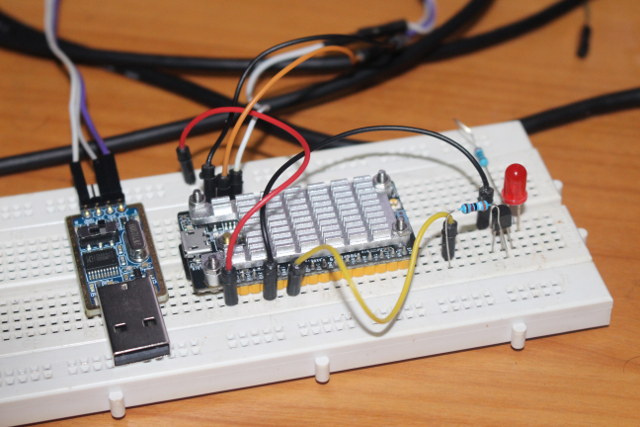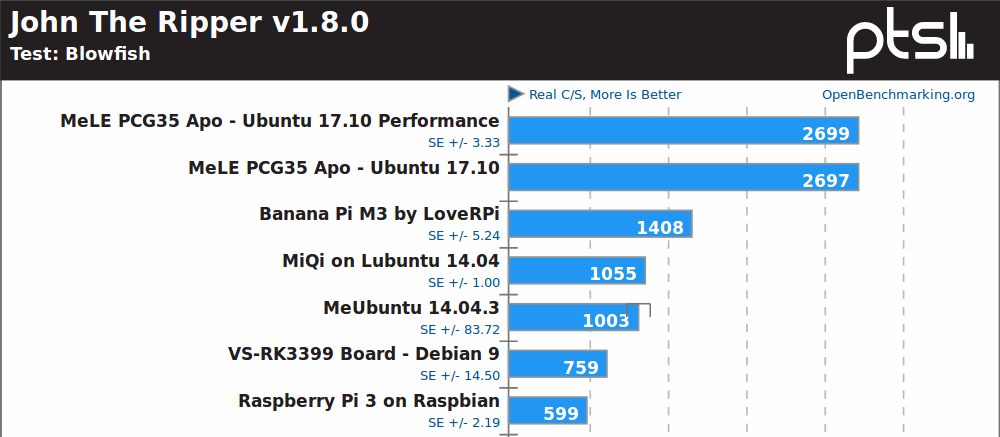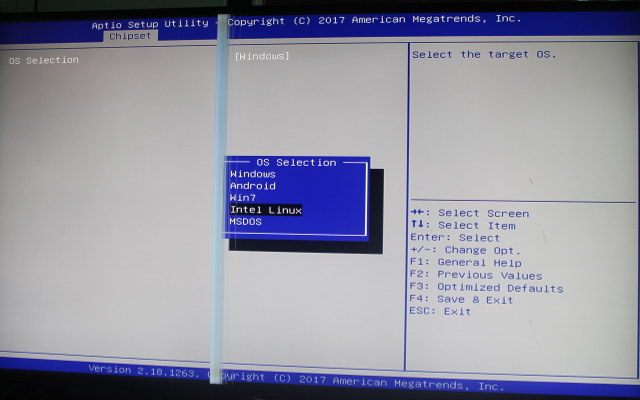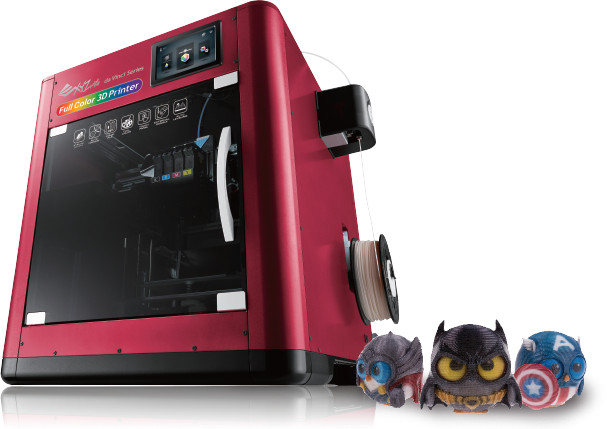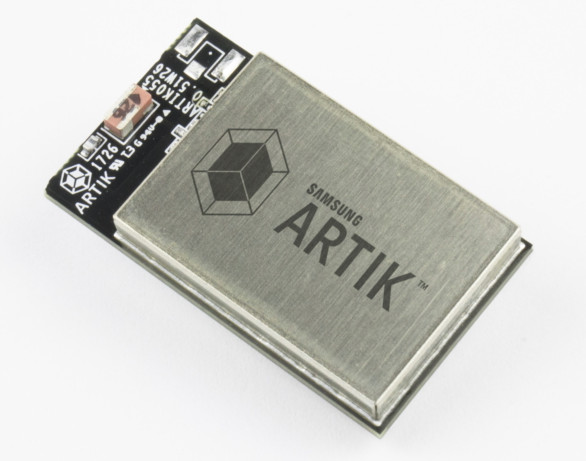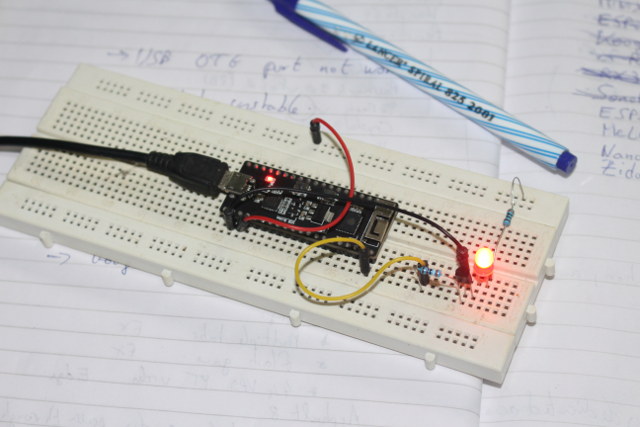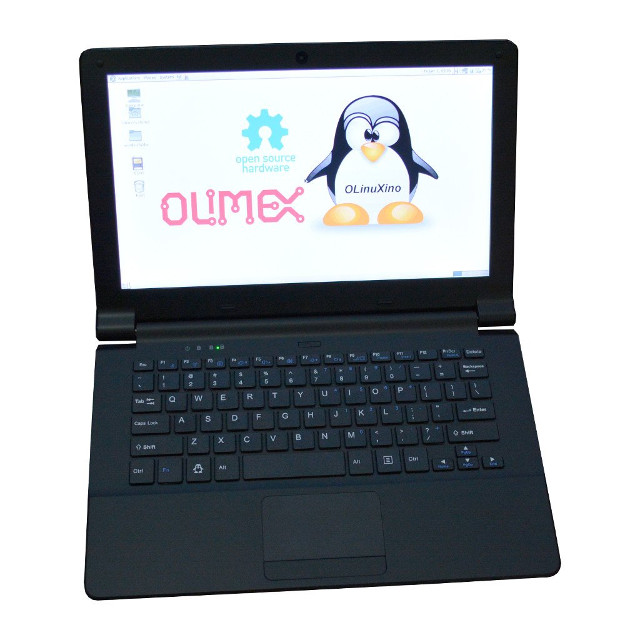As far as I know NanoPi Duo is the only quad core ARM Linux development board that can fit on a breadboard. We’ve already seen it’s much smaller than Raspberry Pi Zero, and the company offer a mini shield exposing USB ports, Ethernet, a few I/Os, and an mSATA slot in in NanoPi Duo Starter Kit Review – Part 1: Unboxing and Assembly. I’ve finally played with it this week-end, and will report what I had to do to blink a LED when connected to breadboard, and my experience using the mini shield with an mSATA SSD, WiFi connectivity, and cooling under load. Flashing Ubuntu 16.04.2 firmware image to NanoPi Duo As with many other Allwinner development boards, you should first check if Armbian is available for the board. NanoPi Duo is not supported, but it’s said to work with Orange Pi Zero image minus support for WiFi. Since the […]
Linux Benchmarks – Intel J3455 Apollo Lake vs Z3735F Bay Trail vs RK3399 and Other ARM Platforms
Since I’ve just installed Ubuntu 17.10 on MeLE PCG35 Apo, I decided I should also run some benchmarks comparing with other ARM and x86 Linux platforms I’ve tested in the past.I was particularly interested to compare the performance of Intel Apollo Lake processors (Celeron J3455 in this case) against higher end ARM processors like Rockchip RK3399 (2x A72, 4x A53) since systems have a similar price (~$150+), as well as against the older Bay Trail processor to see the progress achieved over the last 2 to 3 years. To do so, I used Phoronix Benchmark Suite against Videostrong VS-RK3399 results (RK3399 development board):
|
1 2 3 4 |
sudo apt install php-cli php-gd php-xml php-zip wget http://phoronix-test-suite.com/releases/repo/pts.debian/files/phoronix-test-suite_7.4.0_all.deb sudo dpkg -i phoronix-test-suite_7.4.0_all.deb phoronix-test-suite benchmark 1709271-TY-1704029RI26 |
The benchmark first issued a warning about “powersave” governor, but I still went ahead, and once completed I change it to “performance” governor:
|
1 2 |
sudo apt install cpufrequtils sudo cpufreq-set -r -g performance |
…and ran the tests again. All results are available on OpenBenchmarking. Let’s address the governor results first. cpufreq-info reports that powersave governor […]
MeLE PCG35 Apo Apollo Lake Mini PC Review – Part 3: Ubuntu 17.10
I completed the review of MeLE PCG35 Apo with Windows 10 Home a few days ago, and as promised, I’ve now installed the freshly released Ubuntu 17.10 in the Intel Celeron J3455 “Apollo Lake” mini PC. I’ll start by shortly explaining the step to install Ubuntu 17.10 in the M.2 slot, although you could also install it to the internal eMMC flash replacing Windows 10, then show what works and what does, and finally include a video reproducing the tests I usually do in Windows 10. How to Install Linux in MeLE PCG35 Apo This partially follows the procedure I used to run (not install) Ubuntu 16.04 on MeLE PCG03 Apo mini PC. First you’ll need to download the ISO of your choice (ubuntu-17.10-desktop-am64.iso in my case), and prepare a bootable USB flash drive with the software of your choice be it Rufus, Startup Disk Creator or others. I did […]
CHUWI LapBook 14.1 Laptop Manufacturing Changes – Hardware at Launch vs Several Months Later
Products may evolve over time due to parts becoming phased out (EOL), so company often issues PCN (product change notices) to the company for example to replace eMMC flash that’s not manufactured anymore by a new one. They won’t change any advertised features, so the product specifications should remain the same. Reviewers normally get product from one of the first batch of production, and if you purchase the product a few months later, after carefully reading reviews, you may end up with a device slightly different. But in some cases, the company makes major changes, while still delivering the same advertised hardware specifications. That’s apparently the case for CHUWI LapBook 14.1 laptop. The photo below shows how it looked internally for the sample I reviewed. If you zoom on the photo, you’ll find an M.2 slot on the bottom of the right PCB, potentially allowing you to add an SSD […]
XYZPrinting da Vinci Color Low Cost Full Color 3D Printer Combines Filament with Inkjet Technology
3D printing has become even more affordable this year. If you are on a budget, Anet A8 3D printer going for under $150 is often recommended on the web, but if you have a bigger budget, you’d get printer with a metal extrusion frame, larger build volume, and overall better quality, and Creality CR-10 3D printer is often recommended by reviewers for people with a $300-$400 budget. All those printers print with a single color, which depends on the color of the filament used. The cheapest way to get a colored sample is to paint it yourself after printing. There are printers with dual extruder allowing to use two filament rolls with different colors, but when Karl reviewed Tevo Tarantula 3D printer with dual extruder, he found it was hard to print, was unconvinced with the results, and found it to be an unnecessary upgrade, preferring painting instead. At the […]
Samsung IoT Security News – ARTIK Secure IoT Modules, SmartThings Cloud, and Secure Element
Samsung has made several announcements with IoT, especially IoT security. First, Samsung ARTIK 053, ARTIK 530 and ARTIK 710 modules are getting an “s” version, which stands for “robust security”, as well as a new ARTIK 055s module, and all ARTIK modules can now work with SmartThings Cloud uniting the company’s existing services – ARTIK Cloud and Samsung Connect Cloud – into a single IoT platform. Separately, the company announced their Secure Element solution which combines eFlash memory and new security software. Samsung ARTIK “s” modules & ARTIK 055s The company explains in their blog that ARTIK 053s, 530s, 710s, and the all new 055s will feature “advanced protection, integrated cloud services, and hosted security services with “enhanced ARTIK end-to-end security by providing greater protection for IoT data as well as prevention against hacking”. The press release is a little more specific: ARTIK secure IoT modules provide a strong root […]
Getting Started with MicroPython on ESP32 – Hello World, GPIO, and WiFi
I’ve been playing with several ESP32 boards over the months, and tried several firmware images. I started with a tutorial for Arduino Core on ESP32, a few month later I tested ESP32 JavaScript programming with Espruino on ESPino32 board, and recently Espressif Systems sent me ESP32 PICO core development board powered by their ESP32-PICO-D4 SiP, and while I took some pretty photos, I had not used it so far. So I decided to go with yet another firmware, and this time, I played with MicroPython on ESP32, and will report my experience with basic commands, controlling GPIOs, and WiFi in this getting started post. Flashing Micropython Firmware to ESP32 Board Source code is available on Github, as a fork of MicroPython repo as ESP32 support has not been upstreamed yet. We could built the firmware from source, but there’s also a pre-built binary which you can download on MicroPython website. […]
Olimex TERES-I DIY OSHW Laptop Now Up for Sale for 240 Euros
Olimex has been working on their open source hardware TERES-I DIY laptop since last year. The laptop is supposed to come in kit form, so that you can build it yourself. Every board and most parts are open source to let your easily repair it, or improve it by adapting the part to your own needs. The company has now launched the laptop kit for 240 Euros in black or white. Olimex TERES-I laptop updated specifications: SoC – Allwinner A64 quad core ARM Cortex-A53 processor @ 1.2 GHz with Mali-400MP2 GPU System Memory – 2GB DDR3L Storage – 16 GB eMMC Flash, micro SD slot Display – 11.6″ LCD display with 1366×768 resolution Video Output – 1x HDMI 1.4 port Audio – Via mini HDMI, 3.5mm audio jack, 2x speakers, microphone Connectivity – 802.11 b/g/n WiFi up to 150Mbps, Bluetooth 4.0 LE USB – 2x USB port ports Front camera […]


